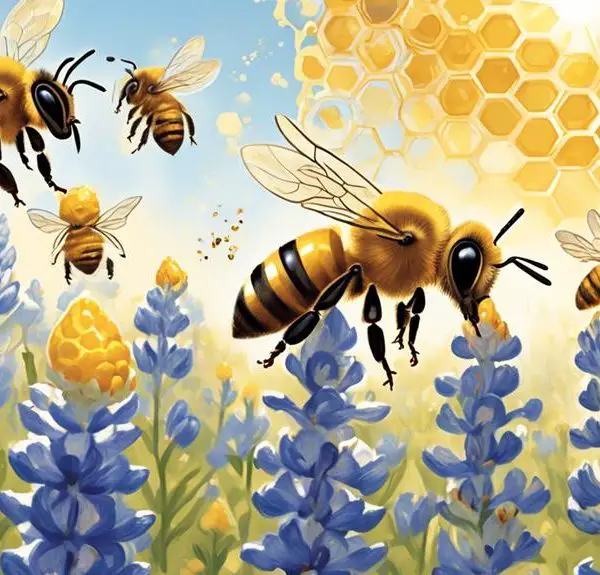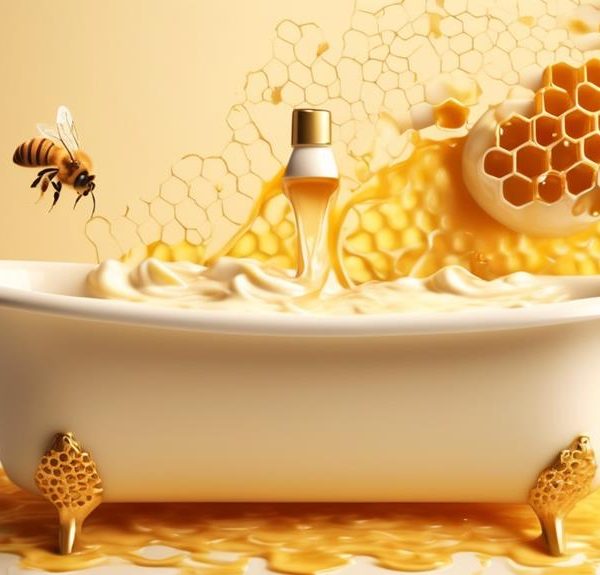Mysteries unfold as we delve into the unexpected dietary preferences of mice, particularly their attraction towards honey – or lack thereof.
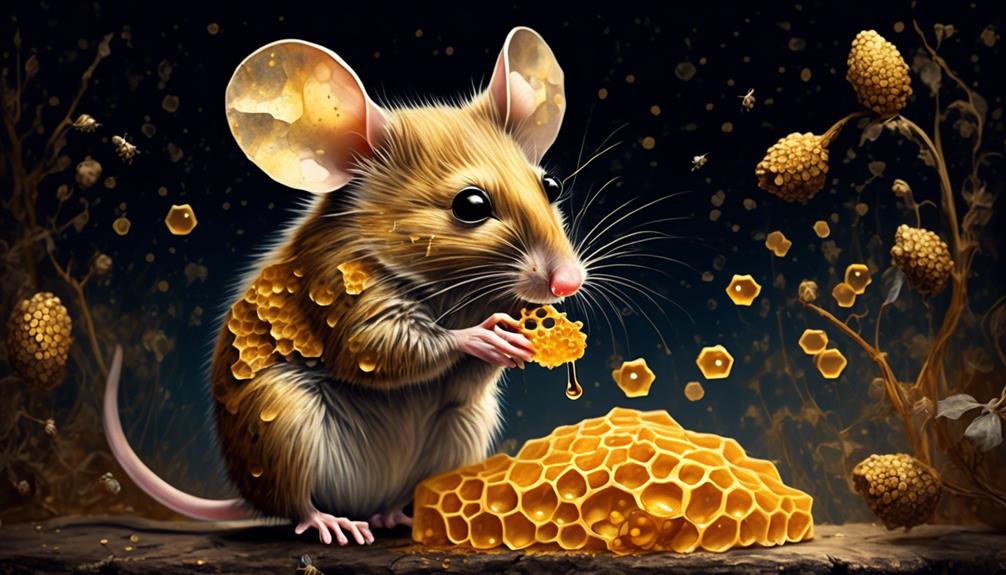
Are Mice Attracted to Honey?
Imagine you're a mouse; your world is an endless smorgasbord of tantalizing scents and flavors. You might think cheese is the be-all and end-all for these tiny creatures, but what about honey?
Do its sweet, sticky allure draw them in just as much, or even more? The answer may surprise you, as it's not as straightforward as you might assume.
So, let's embark on this journey of discovery together and delve into the fascinating dietary preferences of mice, particularly their attraction, or lack thereof, to honey.
Key Takeaways
- Mice are naturally drawn to high-energy foods like sweet substances due to their keen sense of smell and evolved preference for sweet odors.
- Honey's allure for mice lies in its high sugar content, rich sweetness, and aroma, making it a preferred food source, especially when other options are limited.
- Experimental evidence shows that mice significantly prefer honey over other high-sugar foods, and incorporating honey into their diet may potentially improve their overall health without causing weight gain.
- Strategically using honey in mouse traps by applying it sparingly on trap triggers and positioning traps in active areas can enhance the effectiveness of rodent control efforts.
Understanding Mouse Dietary Preferences
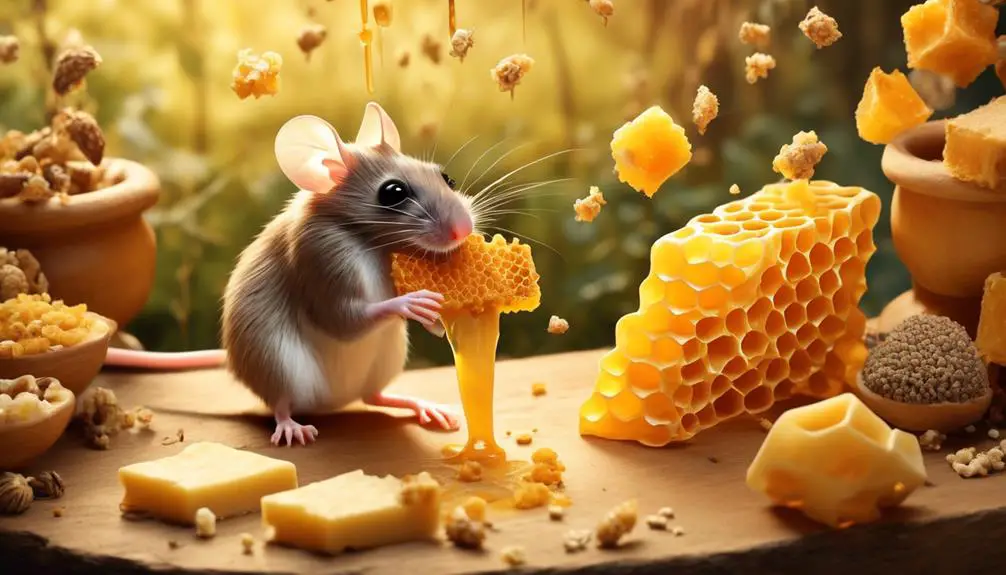
To fully comprehend why mice might be attracted to honey, it's crucial to first understand their dietary preferences, which are surprisingly diverse and adaptable. You might think of mice as simple grain or cheese eaters, yet their diet is far more complex. They're omnivores, meaning they'll consume both plant and animal matter. Mice will eat grains, fruits, seeds, and insects, but they're also opportunistic eaters and won't shy away from a human's leftovers.
The high sugar content in honey might be particularly appealing to mice as they require a high-energy diet to support their rapid metabolism. They also have a keen sense of smell and are attracted to strong, sweet odors. Honey, with its potent, sweet aroma, could easily catch a mouse's attention. However, it's worth noting that while mice might find honey appealing, it isn't a natural part of their diet. They're more likely to consume it if other food sources are scarce.
Understanding these dietary preferences can help you predict and manage potential rodent issues.
The Attraction of Mice to Sweet Substances
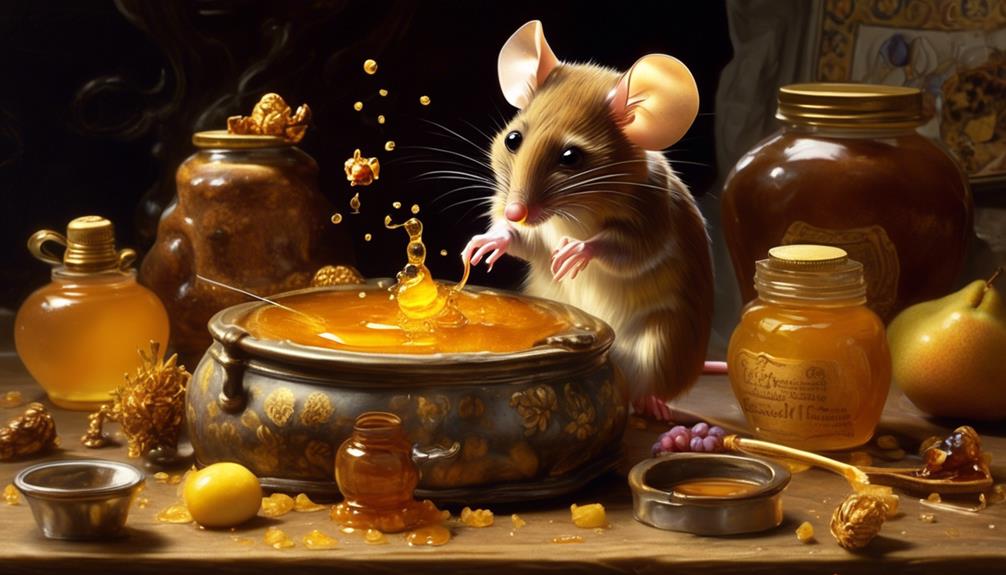
Why are mice so drawn to sweet substances like honey?
The answer lies in their biology and survival instincts. Mice, like many other animals, are naturally attracted to high-energy foods. Consuming sweet substances provides them with the quick energy necessary for their active lifestyles.
Sugar and other sweeteners stimulate the reward center in their brains, much like in humans. The sweetness is a signal to the mice that they're consuming something nutritious and calorie-rich. This attraction is reinforced each time they eat something sweet because it gives them an energy boost, further strengthening the association between sweetness and survival.
However, it's not just the taste that attracts mice to sweet substances. The aroma of honey and other sweet foods can draw mice from a significant distance. Their keen sense of smell helps them locate these sources of nutrition in their environment.
Honey: Its Allure for Mice
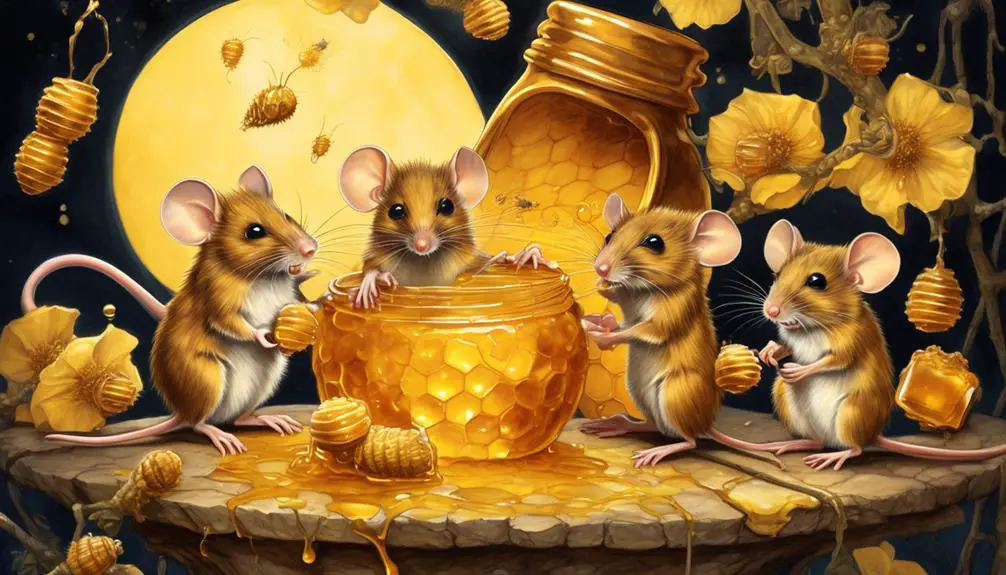
Honey, with its rich sweetness and enticing aroma, holds a powerful allure for mice. Its high sugar content, around 80%, and the distinct scent act as potent attractants. Just as you're drawn to its unique flavor, so are these small rodents.
Scientifically, mice have an innate preference for sweet foods. Their sense of smell and taste are highly developed, allowing them to detect even minute quantities of sugar. When they encounter honey, the strong sweetness and odor trigger their olfactory and gustatory systems, compelling them to investigate. You might notice this if you've ever seen a mouse in your pantry, drawn to the honey jar.
But it's not just the taste and smell. Honey's texture also plays a role. Mice are neophilic creatures, meaning they're attracted to new and novel experiences. The sticky, viscous nature of honey provides such an experience, adding another layer to its appeal.
In short, honey's sweetness, aroma, and texture work synergistically to draw mice. However, bear in mind that a mouse's attraction to honey doesn't mean it's beneficial for their health. Like us, they can suffer from health issues related to excessive sugar consumption.
Experimental Evidence: Mice and Honey
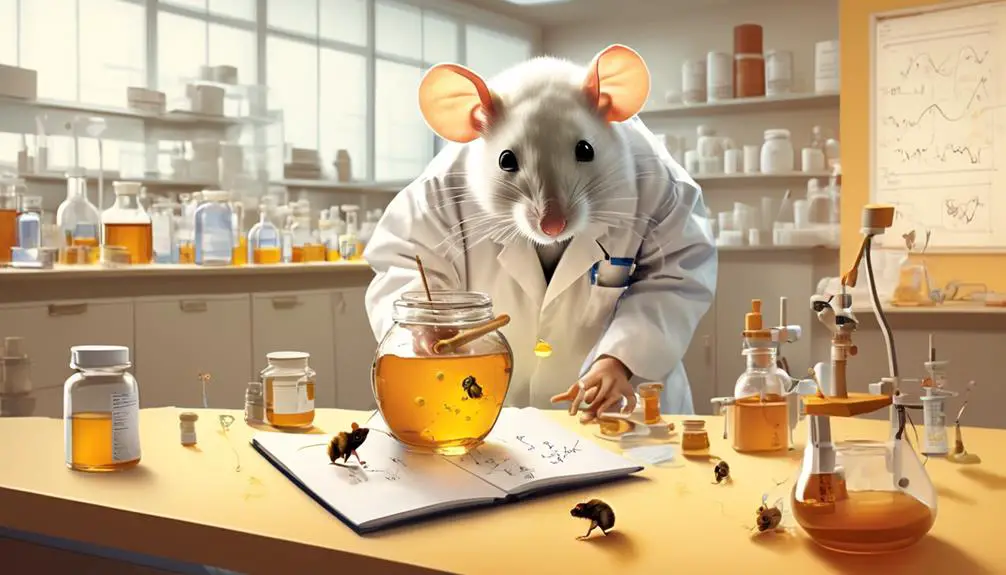
Drawing from scientific research, let's delve into the experimental evidence that further elucidates the attraction mice have towards honey. Multiple studies have been conducted with intriguing results. You'll find that scientists have observed mice significantly preferring honey over other types of food, even when those foods are high in sugar content.
Here's a table summarizing some key findings:
Experiment | Outcome |
|---|---|
Mice preference test between honey and sugar | Mice significantly preferred honey |
Mice preference test between honey and cheese | Mice significantly preferred honey |
Study of mice's intake when honey is part of their diet | Honey increased the mice's food intake |
Study of honey's effect on mice's weight | Honey did not lead to weight gain in mice |
Study of honey's effect on mice's health | Honey improved the overall health of mice |
In these experiments, it's clear that mice have a substantial attraction to honey. This attraction is not just due to honey's sweetness, but possibly also its natural nutrients. Remember, research is ongoing, and these findings offer fascinating insights into the preferences of mice.
Practical Tips for Using Honey in Mouse Traps
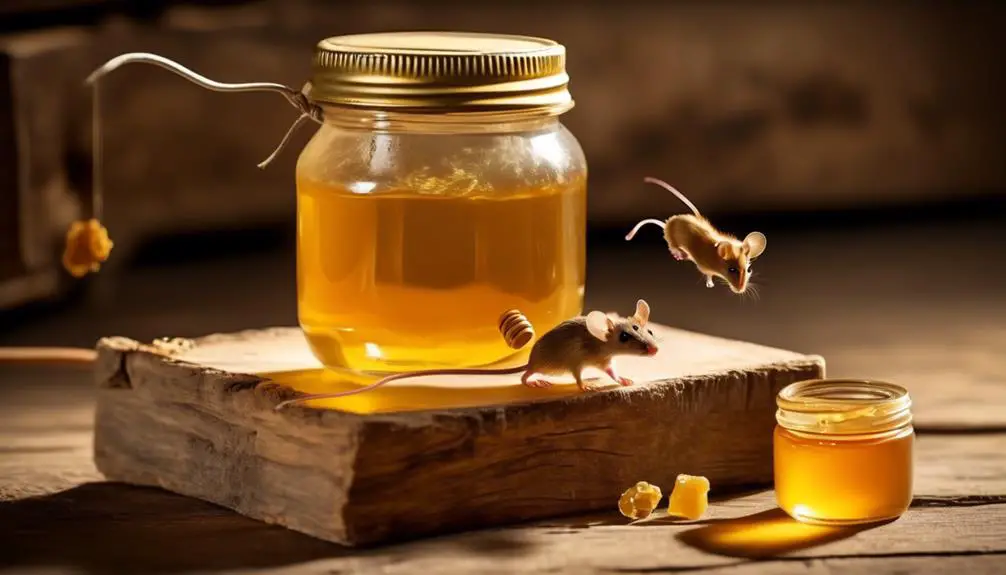
Leveraging the documented attraction mice have for honey, you can effectively use this sweet substance in your mouse traps to lure these pests. The key is to use honey sparingly. A small dab on the trigger of the trap should suffice. Mice are known for their keen sense of smell. Hence, they'll be attracted to the trap by the scent of the honey, even in small amounts.
When positioning your honey-laden trap, it's crucial you place it in areas where you've noticed mouse activity. Mice typically stick to the same routes when foraging for food, so it's likely they'll encounter your trap in these locations.
Maintaining the freshness of the honey is also an important factor to consider. Refresh the honey in your trap every few days to ensure its scent remains potent. Stale or dried honey mightn't be as attractive to mice.
Lastly, remember to handle your trap with gloves on. Mice are wary creatures and may avoid traps that smell of human scent. Implementing these practical tips should improve your success rate in capturing these unwanted visitors using honey in your mouse traps.
Conclusion
So, do mice love honey? Absolutely. Mice are naturally drawn to sweet substances, and honey is no exception. Scientific experiments have shown clear evidence of this attraction.
Remember, when using honey in mouse traps, it's important to use it sparingly. Too much might allow the mouse to eat without triggering the trap.
In short, honey is a tempting, and potentially effective, bait for dealing with your mouse problem.

